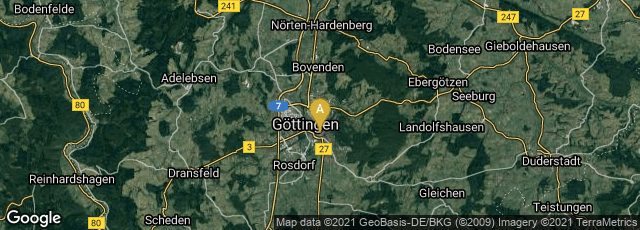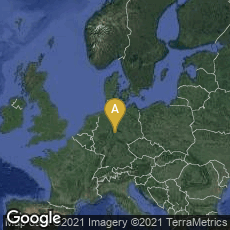

A: Innenstadt, Göttingen, Niedersachsen, Germany
In 1777 German scientist, satirist and Anglophile Georg Christoph Lichtenberg discovered Lichtenberg figures, and described them in his memoir "Super nova methodo motum ac naturam fluidi electrici" investigandi," Novi Commentarii Societatis Regiae Scientiarum Gottingensis VII, Göttingen, 1777.
"In 1777, Lichtenberg built a large electrophorus to generate high voltage static electricity through induction. After discharging a high voltage point to the surface of an insulator, he recorded the resulting radial patterns in fixed dust. By then pressing blank sheets of paper onto these patterns, Lichtenberg was able to transfer and record these images, thereby discovering the basic principle of modern Xerography. This discovery was also the forerunner of modern day plasma physics. Although Lichtenberg only studied 2-dimensional (2D) figures, modern high voltage researchers study 2D and 3D figures (electrical trees) on, and within, insulating materials. Lichtenberg figures are now known to be examples of fractals" (Wikipedia article on Lichtenberg figures, accessed 06-11-2010).